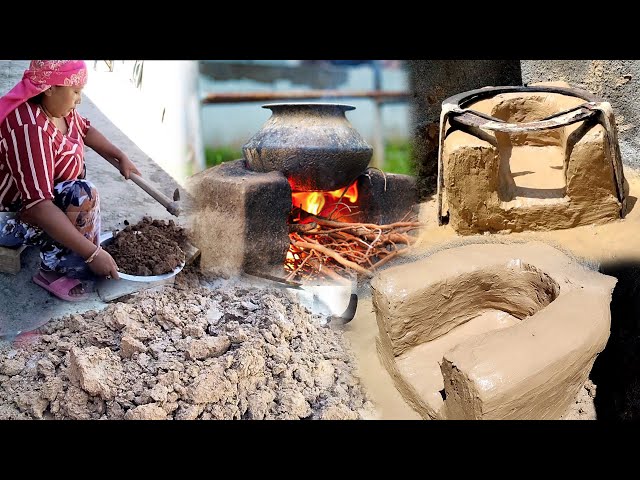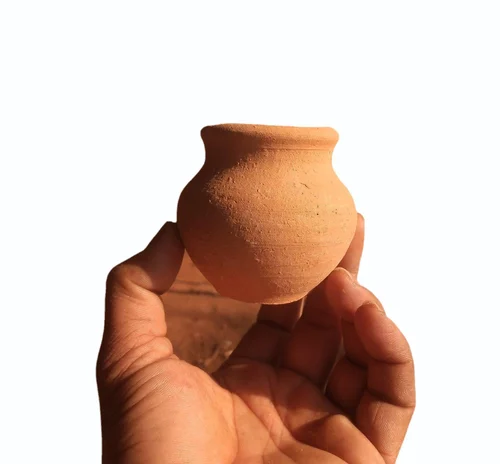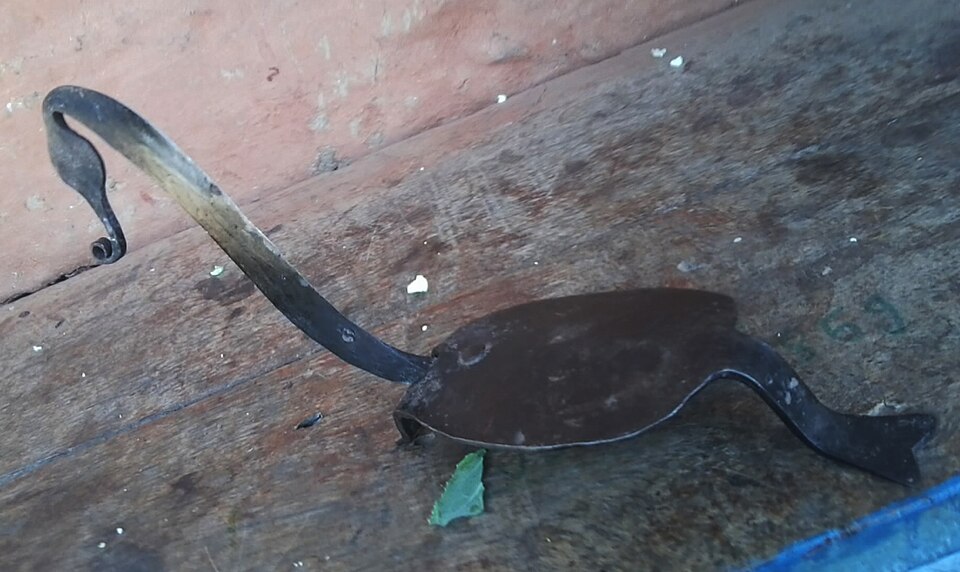Share this Article
In Nepal, the matka—an earthen pot—holds a cherished place in daily life, culture, and cuisine. Traditionally crafted from clay, these pots are integral to various aspects of Nepali society, from storing water to serving beverages and cooking.
Traditional Craftsmanship
The creation of a matka is a meticulous process that involves selecting high-quality clay, shaping it into the desired form, and firing it in a kiln to achieve durability. This craftsmanship ensures that each matka is not only functional but also a piece of art reflecting the artisan's skill and cultural heritage.In the Kathmandu Valley, particularly in Bhaktapur and Thimi, the art of pottery has been meticulously preserved by the Newar community, notably the Prajapati and Awal clans. These artisans have passed down their skills through generations, maintaining traditional methods that blend artistry with utility. The Prajapati community, for instance, has been involved in pottery for generations, with each household historically contributing to this craft.
Matka Water: A Refreshing Tradition
One of the most common uses of the matka in Nepal is for storing water. The porous nature of the clay allows for natural cooling through evaporation, keeping the water refreshingly cool even during hot summer days. This method of cooling is both energy-efficient and eco-friendly, aligning with sustainable living practices.
Matka Chiya: The Earthen Tea Experience
"Matka Chiya" refers to tea served in traditional clay cups. The practice of serving tea in matkas imparts a unique earthy flavor to the beverage, enhancing the overall drinking experience. This tradition not only preserves cultural practices but also offers a sensory delight that connects individuals to Nepal's rich heritage.
Culinary Uses: Cooking in Clay
Beyond beverages, matkas are also used in cooking. Dishes prepared in clay pots are believed to retain their natural flavors and nutrients better than those cooked in metal or non-stick cookware. The slow cooking process in a matka allows for even heat distribution, resulting in tender and flavorful meals.The matka's influence extends into Nepali cuisine. Dishes prepared in clay pots are believed to retain their natural flavors and nutrients better than those cooked in metal or non-stick cookware. The slow cooking process in a matka allows for even heat distribution, resulting in tender and flavorful meals. Restaurants in Kathmandu have embraced this tradition, offering dishes like matka biryani and matka chiya (tea served in clay cups), which have become popular among locals and tourists alike .
Cultural Significance
The matka is more than just a utilitarian object; it is a symbol of Nepali culture and tradition. Its use in daily life reflects a deep connection to the earth and a commitment to sustainable practices. In many rural areas, the matka remains a staple in households, embodying a lifestyle that values simplicity and harmony with nature.Beyond its utilitarian role, the matka holds deep cultural and spiritual meaning. In Hindu and Buddhist rituals, clay pots are essential for offerings and ceremonies, symbolizing purity and connection to the earth . Festivals like Tihar see the lighting of thousands of clay lamps, underscoring the matka's role in religious observances.
Functionally, the matka serves as a natural water cooler. Its porous nature allows for evaporative cooling, keeping water refreshingly cool even during the hottest months. This method is both energy-efficient and eco-friendly, aligning with sustainable living practices .
Modern Revival and Commercialization
In recent years, there has been a resurgence in the popularity of matkas, particularly in urban settings. Cafés and restaurants in Kathmandu and other cities have embraced the tradition of serving beverages in clay cups, attracting both locals and tourists seeking an authentic Nepali experience. This revival not only supports local artisans but also promotes cultural heritage in a modern context.
Environmental Benefits
The environmental advantages of using matkas are significant. Being made from natural materials, they are biodegradable and do not contribute to plastic pollution. Additionally, the use of matkas in cooking and serving reduces the reliance on synthetic materials, promoting a more sustainable lifestyle.
Hygiene and Maintenance
Maintaining cleanliness is crucial when using matkas, especially for storing water. Regular cleaning and proper drying prevent the growth of bacteria and ensure the longevity of the pots. It's advisable to wash matkas with fresh water and allow them to dry completely before refilling to maintain hygiene and water quality.
Connection to Heritage
Using a matka is a way to connect with Nepal's rich cultural heritage. It serves as a reminder of traditional practices and the importance of preserving them for future generations. In a world increasingly dominated by modern conveniences, the matka stands as a testament to timeless traditions and sustainable living.
Environmental Benefits of Using a Matka
- Biodegradability: Unlike plastic containers, which can take centuries to decompose and often release harmful chemicals into the environment, clay pots are biodegradable. This means they break down naturally without polluting the ecosystem .
- Energy Efficiency: Matkas utilize natural cooling through evaporative processes, eliminating the need for electricity. This not only conserves energy but also reduces carbon emissions associated with refrigeration .
- Reduction in Plastic Waste: By opting for earthen pots, there's a decrease in the reliance on single-use plastic bottles and containers, thereby minimizing plastic pollution and its detrimental effects on wildlife and ecosystems .
- Sustainable Production: The manufacturing of clay pots involves minimal industrial processes, reducing pollution and resource consumption compared to the production of synthetic materials.
- Cultural Preservation: Promoting the use of matkas supports traditional craftsmanship and encourages sustainable living practices, fostering a deeper connection with cultural heritage and environmental stewardship.
Which types of clay used to produce matka?
Types of Clay Used in Matka Production
- Black Clay (Dyo-cha or Gicha Clay)
Predominantly sourced from the Kathmandu Valley, particularly from areas like Sipadol near Bhaktapur, black clay is favored for its plasticity and workability. This clay is often mixed with other clays to achieve the desired consistency for shaping.
- Yellow Clay
Yellow clay is another common choice, known for its fine texture and ability to retain heat. It is often combined with black clay to enhance the pot's structural integrity and aesthetic appeal.
- Red Clay
Red clay, rich in iron oxide, imparts a reddish hue to the finished product. It is sometimes used in combination with other clays to achieve specific color and texture characteristics.
- Tempering Materials
To improve the clay's workability and prevent cracking during firing, potters often add tempering agents such as sand, ash, or organic materials like sawdust or dried animal dung. These additives help in reducing shrinkage and enhancing the pot's strength.
Clay Preparation Process
The preparation of clay for matka production involves several steps:
- Sourcing and Mixing: Clays are collected from various sources and mixed in specific proportions to achieve the desired properties.
- Kneading: The mixed clay is kneaded to remove air bubbles and ensure uniform consistency.
- Tempering: Additives like sand or ash are incorporated to improve the clay's texture and reduce the risk of cracking during firing.
- Shaping: The prepared clay is then shaped into the desired form, often using a potter's wheel or hand-building techniques.
- Drying and Firing: Once shaped, the pots are dried slowly to remove moisture and then fired in a kiln at high temperatures to harden them.
This meticulous process ensures that each matka is not only functional but also a testament to the rich cultural heritage of Nepalese pottery.
Conclusion
The matka is more than just an earthen pot in Nepal; it is a symbol of tradition, sustainability, and cultural identity. Its continued use and appreciation highlight the enduring value of connecting with one's heritage and the natural world.
Categories:
Traditional Tools and Utensils
Tags:
matka







